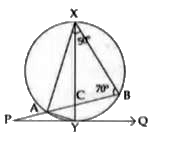Name the type of quadrilateral formed, if any by the following points, and give reasons for your answer :
(-3, 5), (3, 1), (0, 3), (-1,-4)Solution in Kannada
Step by step video & image solution for Name the type of quadrilateral formed, if any by the following points, and give reasons for your answer : (-3, 5), (3, 1), (0, 3), (-1,-4) by Maths experts to help you in doubts & scoring excellent marks in Class 10 exams.
Updated on:21/07/2023Topper's Solved these Questions
- CO-ORDINATE GEOMETRYBOOK - ZEN PUBLICATIONCHAPTER - CO-ORDINATE GEOMETRYEXERCISE - TEXTUAL EXERCISE EXERCISE 7.2
10 Videos
- CO-ORDINATE GEOMETRYBOOK - ZEN PUBLICATIONCHAPTER - CO-ORDINATE GEOMETRYEXERCISE - TEXTUAL EXERCISE EXERCISE 7.3
5 Videos
- CO-ORDINATE GEOMETRYBOOK - ZEN PUBLICATIONCHAPTER - CO-ORDINATE GEOMETRYEXERCISE - ZEN ADDITIONAL QUESTIONS - HIGHER ORDER THINKING SKILLS [HOTS] QUESTIONS
14 Videos
- CIRCLESBOOK - ZEN PUBLICATIONCHAPTER - CIRCLESEXERCISE - ZEN ADDITIONAL QUESTIONS ( HOT [HIGHER ORDER THINKING SKILLS] - QUESTIONS) (IIT AND IMO)
9 Videos
- CONSTRUCTIONSBOOK - ZEN PUBLICATIONCHAPTER - CONSTRUCTIONSEXERCISE - ZEN ADDITIONAL QUESTIONS ( HOTS [HIGHER ORDER THINKING SKILLS] - QUESTIONS) IIT /OLYMPIAD/ IMO
5 Videos
Similar Questions
Find the corrdinates of the point which divides the join of (-1, 7) and (4, -3) into the ratio 2 : 3 internally.
View SolutionFind the area of the triangle whose vertices are:
(i) (2,3), (-1,0), (2,-4) (ii) (-5,-1), (3,-5), (5, 2)
View SolutionIn what ratio does 4x +3y-13 0 divide the line segment joining (2, 1) and (1, 4)?
View SolutionIn the adjoining figure, XY is a diameter of the circle and PQ is a tangent to the circle at Y. Given that ⌊AXB=50∘ and ⌊ABX=70∘, calculate ⌊BAY and ⌊APY.

View SolutionGiven below are the steps of construction of a pair of tangents to a circle of radius 4 cm from a point on the concentric circle of radius 6 cm. Find which of the following steps is wrong.
(P) Step 1: Take a point O on the plane paper and draw a circle of radius OA = 4 cm. Also draw a concentric circle of radius OB = 6 cm.
(Q) Step 2: Find the midpoint C of OB and draw a circle of radius BA= AO. Suppose this circle intersects the circle of radius 4 cm at P and Q.
(R) Step 3: Join BP and BQ to get the desired tangents.
View SolutionName the type to quadrilateral formed, if any , by the following points, and give reasons for your answer. (AS2)
( - 3 , 5), ( 1 , 10) , ( 3 , 1) , ( - 1, -4) .
View SolutionName the type of quadrilateral formed, if any by the following points, and give reasons for your answer :
(-1, -2), (1,0), (-1, 2), (-3, 0)
View SolutionName the type of quadrilateral formed, if any by the following points, and give reasons for your answer :
(-3, 5), (3, 1), (0, 3), (-1,-4)
View SolutionName the type of quadrilateral formed, if any by the following points, and give reasons for your answer :
(4, 5),(7, 6), (4, 3), (1, 2)
View SolutionName the type of quadrilateral formed, if any, by the points, and give reasons for your answer.
(-3, 5), (3, 1), (1, -3), (-5, 1)
View SolutionName the type of quadrilateral formed, if any, by the points, and give reasons for your answer.
(4, 5), (7, 6), (4, 3), (1, 2)
View SolutionName the type of quadrilateral formed, if any, by the points, and give reasons for your answer.
(-1, -2), (1, 0), (-1, 2), (-3, 0)
View SolutionName the type of quadrilateral formed, if any, by the points, and give reasons for your answer.
(-3, 5), (3, 1), (1, -3), (-5, 1)
View SolutionName the type of quadrilateral formed, if any, by the points, and give reasons for your answer.
(4, 5), (7, 6), (4, 3), (1, 2)
View SolutionName the type of quadrilateral formed, if any by the following points, and give reasons for your answer :
(4, 5),(7, 6), (4, 3), (1, 2)
View SolutionName the type of quadrilateral formed, if any, by the points, and give reasons for your answer.
(-1, -2), (1, 0), (-1, 2), (-3, 0)
View Solution
